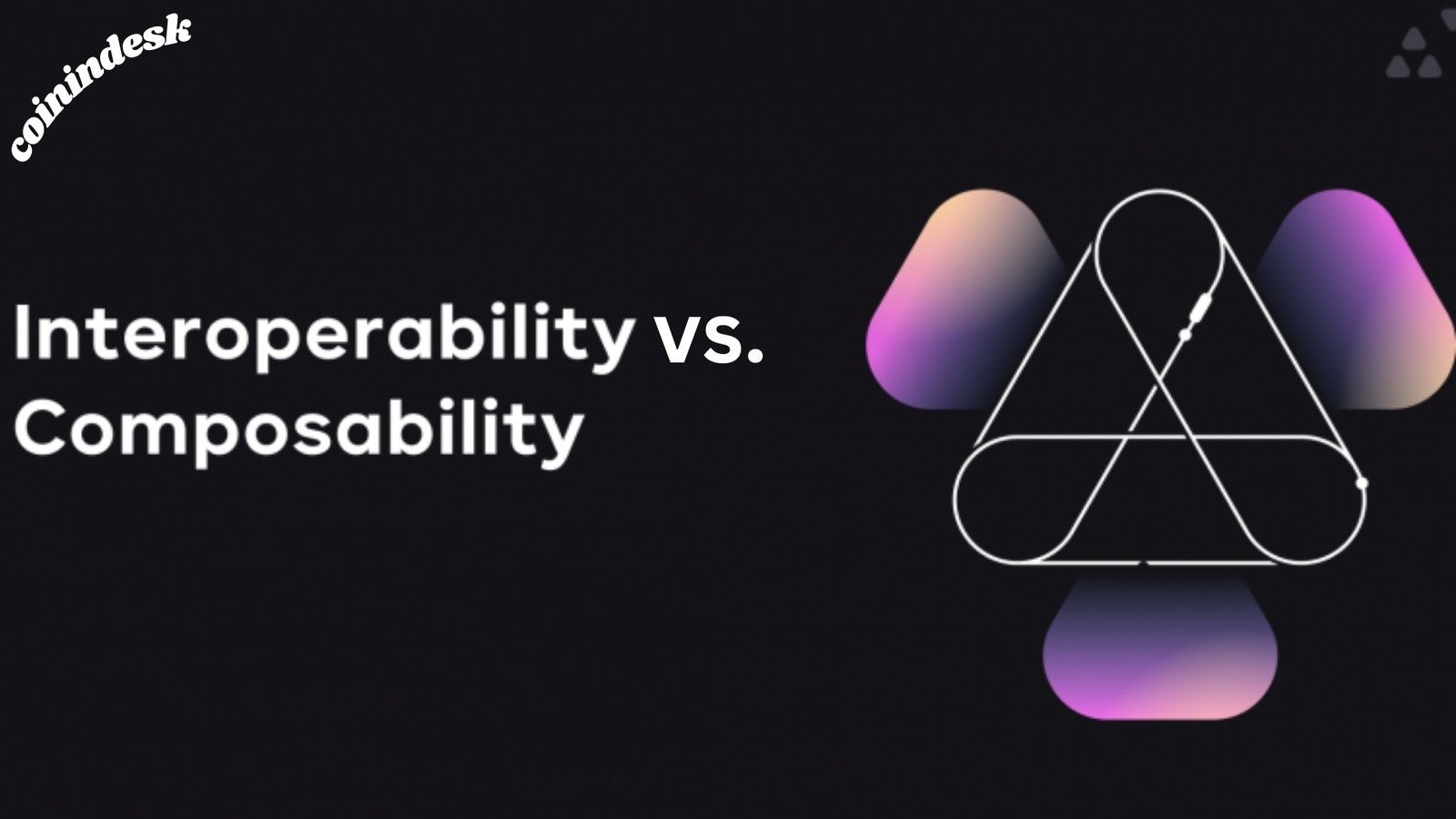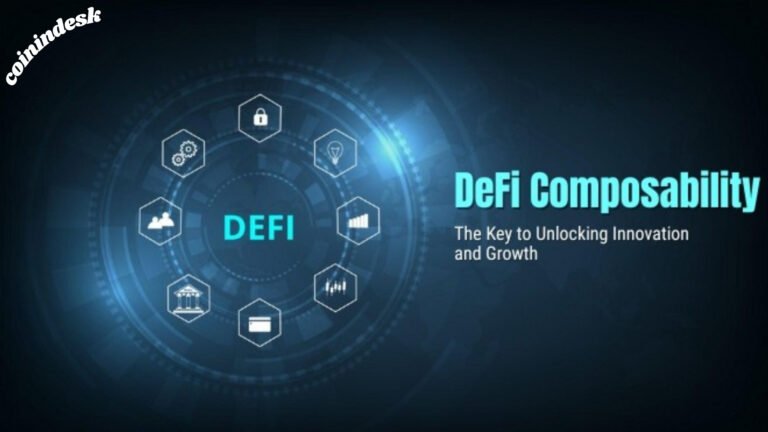Composability in DeFi. Composability is a driving force behind decentralized finance’s continuous development and expansion. The term “composability” is used in decentralized finance (DeFi) to describe how well different applications and protocols can work together. Combining and integrating their building components allows for new financial services and functions. Other protocols can be stacked and combined flexibly, much like Lego blocks. This interoperability is the same way.
Composability is crucial to the DeFi ecosystem because it encourages innovation by letting programmers create new financial products utilizing existing protocols. This agility creates a dynamic services environment, which fosters innovation and the evolution of DeFi. By increasing the asset’s utility across many applications, composition also improves liquidity and efficiency. Because of the lowered barriers to entry for users and developers, the ecosystem becomes more open and accessible.
Components of Composability in DeFi
The modular and interoperable character of DeFi is built around its composability, which consists of multiple essential components. Among these are protocols for lending and borrowing, smart contracts, SDKs, and APIs. Smart contracts, which are code that may run on the blockchain, are the backbone of many DeFi applications. The interactions of these contracts form the base layer of composability.
The foundational elements of DeFi composability also include token standards and interoperability. You can use tokens from different projects interchangeably inside the DeFi ecosystem since standards like ERC-20 and ERC-721 ensure that tokens and protocols are compatible and interoperable.
Another crucial aspect of DeFi composability is the procedures for lending and borrowing. Users can lend, borrow, or trade assets through these protocols, which include lending platforms and decentralized exchanges. The interoperability of these protocols makes functionalities such as yield farming, flash loans, and complex trading techniques possible.
Software development kits (SDKs) and application program interfaces (APIs) are essential for DeFi to promote interoperability and accelerate ecosystem innovation. For example, application programming interfaces (APIs) provide seamless communication across software systems. By establishing uniform methods of accessing distinct features, they facilitate the integration of disparate protocols. SDKs also ease software integration and construction by providing developers with pre-built tools and resources. These kits include essential modules like wallet integrations and intelligent contract interactions.
These parts work together to stack protocols, which in turn allows the creation of new financial products and services. This modular design multiplies the DeFi space’s usability and efficiency and promotes continual innovation by allowing the smooth integration of many apps and capabilities.
Composability vs. Interoperability

Despite their shared importance, the ideas of composability and interoperability in DeFi couldn’t be more different. Composability refers to the ability of other smart contracts or protocols to communicate and link with one another without any hitches; this allows us to mix different components to create new features.
Conversely, interoperability is about different systems and networks working together and sharing information and resources. A system’s composability refers to its ability to combine and reconfigure its components, whereas interoperability refers to the degree to which various systems or networks are compatible.
Types of Composability in DeFi

Composability in the context of software systems, including DeFi, can be categorized into three essential forms: morphological, atomic, and syntactic composability.
Morphological composability
This is the ability of individual parts or modules to combine into larger structures while retaining their characteristics and capabilities. For DeFi purposes, this may mean incorporating distinct protocols or intelligent contracts into a more extensive system but preserving their traits so that they can interact and function independently.
Atomic composability
Atomic composability is the capacity of individual parts or modules to function autonomously. Each protocol or smart contract in DeFi can operate independently, providing a unique service or set of capabilities that can be utilized singly or in tandem with others without compromising their validity.
Syntactic composability
The primary goal of syntactic composability is to ensure that components are compatible and can work together effectively based on their interfaces or communication protocols. Syntactic composability in DeFi ensures that different protocols or modules can exchange information or functionalities by following specified interfaces or communication protocols.
Composability in Traditional Finance vs. DeFi
The composability of DeFi, characterized by decentralized and interconnected protocols, enables a financial landscape that is more adaptable, inclusive, and dynamic in contrast to the rigid and segmented structure of conventional finance. Composability is limited in traditional finance due to centralized hierarchies and closed systems. Banks and other financial organizations tend to work independently and lack service interoperability. It is not uncommon for institutions to offer siloed goods and services that can. Since intermediaries, proprietary systems, and stringent laws are required, innovation moves quickly.
In contrast, composability is DeFi’s bread and butter. Its modular and compatible protocols enable a permissionless, open-source ecosystem. Smart contracts, as building blocks, allow for the accessible communication of various protocols and applications. In a short time, developers can create novel financial services by combining and remixing these protocols. Increased crop yields, protocol stacking, and decentralized, intermediary-free transactions are all possible in this unfettered setting, which fosters innovation.
For example, with DeFi, Protocol A, which provides loan services, and Protocol B, which enables decentralized trading, can coexist. Putting assets into Protocol A and then using them in Protocol B can result in compound yields. Users can innovate quickly by combining several protocols to construct complicated financial strategies. The composability of DeFi, which offers efficiency and flexibility that conventional finance struggles to match, is based on this seamless connection.
When borrowing assets from a bank, compounding advantages are diminished because they are not immediately exploited in the stock exchange. Defi composability is more combinatorially powerful than typical financial services since compartmentalization limits innovation and flexibility.
Benefits of DeFi Composability

The evolution of decentralized finance is propelled by DeFi Development composability, which fosters innovation, liquidity, inclusivity, and user experiences. The capacity to encourage rapid invention is the primary advantage of composability. It facilitates the fast creation of sophisticated new financial products and services by letting programmers integrate preexisting protocols like building blocks. The DeFi space is constantly evolving thanks to this adaptability, which encourages experimentation.
Composition also improves efficiency and liquidity by maximizing asset usage across different applications. Reducing the amount of time assets sit idle enhances market efficiency. It promotes diversity and ecosystem engagement by lowering entry barriers for users and developers. This interconnection improves user experiences by delivering a plethora of interconnected services and apps under one roof, which encourages the development and growth of decentralized finance.
Risks Associated With DeFi Composability
Stringent security procedures and regulatory frameworks are necessary for sustainable expansion in light of the security vulnerabilities, dependency risks, regulatory uncertainties, and potential system breakdowns that DeFi composability poses. One major cause for concern is security issues that arise as a result of the protocols’ interconnection. When protocols or intelligent contracts interact, it can lead to complex attack surfaces that expose ecosystem-wide vulnerabilities.
The possibility that a breach or breakdown in a base protocol can trigger a domino effect impacting other protocols and user monies is another example of a dependency risk. Due to its dynamic nature, regulatory and compliance concerns may pose legal hurdles for DeFi.
Composability promotes innovation quickly, but this could result in poorly tested protocols or hastily integrated systems, all of which increase the probability of mistakes, vulnerabilities, or system failures. To tackle these concerns and guarantee the security and long-term prosperity of the DeFi ecosystem, we need rigorous security measures, thorough audits, standardization activities, and evolving regulatory frameworks.
FAQs
1. What is composability in DeFi?
Composability refers to how DeFi protocols can seamlessly interact and integrate like Lego blocks, enabling new financial services.
2. Why is composability important in DeFi?
It fosters rapid innovation, improves liquidity, and allows developers to build complex products using existing protocols.
3. How does composability differ from interoperability?
Composability focuses on combining components within a system, while interoperability enables different systems to work together.
4. What are the main types of composability in DeFi?
They include morphological (structure), atomic (independent function), and syntactic (interface compatibility) composability.
5. What risks come with DeFi composability?
Security vulnerabilities, protocol dependencies, and regulatory uncertainties can increase due to interconnected systems.


